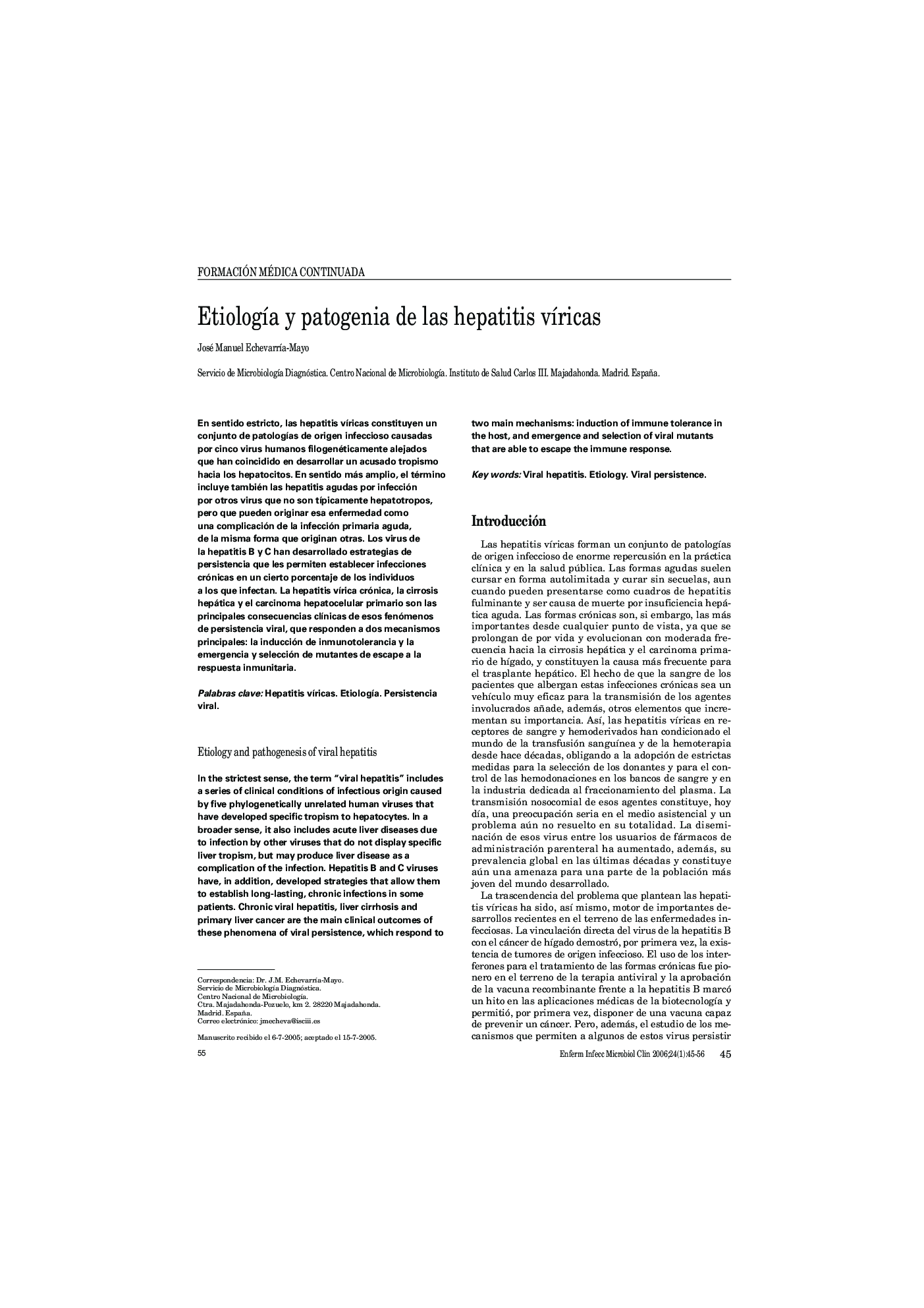| Article ID | Journal | Published Year | Pages | File Type |
|---|---|---|---|---|
| 3403218 | Enfermedades Infecciosas y Microbiología Clínica | 2006 | 12 Pages |
Abstract
In the strictest sense, the term “viral hepatitis” includes a series of clinical conditions of infectious origin caused by five phylogenetically unrelated human viruses that have developed specific tropism to hepatocytes. In a broader sense, it also includes acute liver diseases due to infection by other viruses that do not display specific liver tropism, but may produce liver disease as a complication of the infection. Hepatitis B and C viruses have, in addition, developed strategies that allow them to establish long-lasting, chronic infections in some patients. Chronic viral hepatitis, liver cirrhosis and primary liver cancer are the main clinical outcomes of these phenomena of viral persistence, which respond to two main mechanisms: induction of immune tolerance in the host, and emergence and selection of viral mutants that are able to escape the immune response.
Related Topics
Life Sciences
Immunology and Microbiology
Microbiology
Authors
José Manuel EchevarrÃa-Mayo,
